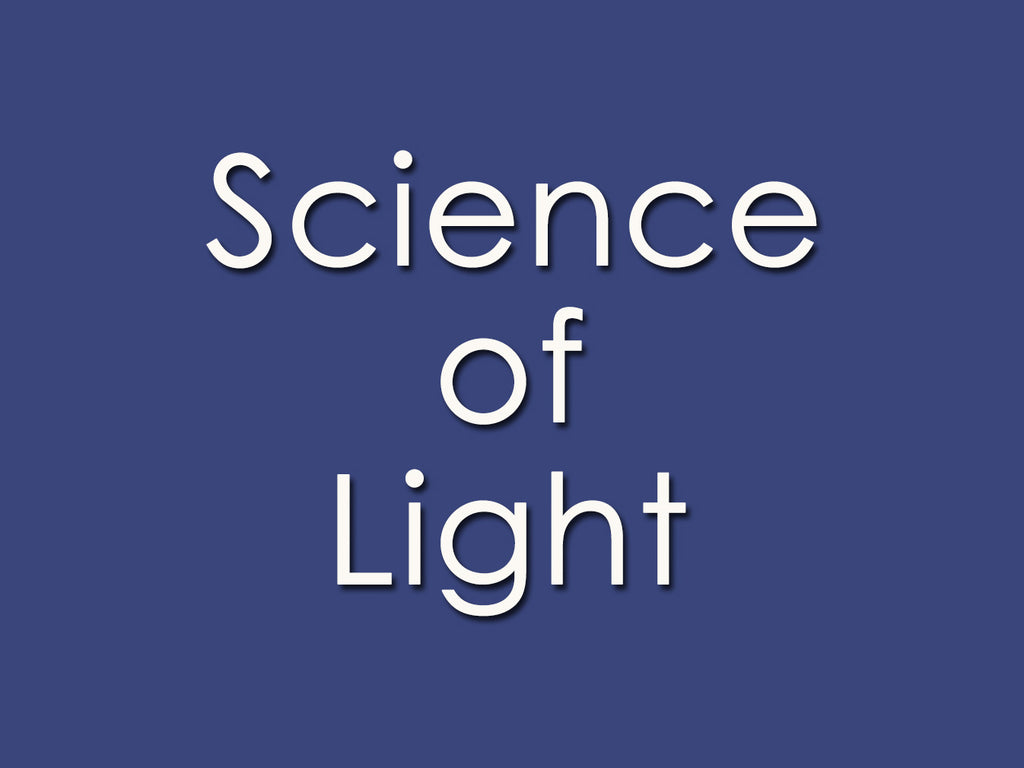Un guide simple pour les maquilleurs :
Comment utiliser TML pour la photographie
Vous êtes maquilleur, pas photographe, mais si vous photographiez vos propres œuvres, un éclairage adapté fait toute la différence. Bonne nouvelle ? Les éclairages TML peuvent simplifier cette étape grâce à quelques conseils.
Voici ce que vous devez savoir pour obtenir les meilleures photos de votre travail.
1 Taille de la lumière : ombres douces ou nettes
La taille de votre lumière affecte la façon dont les ombres tombent sur votre sujet.
● Lumière plus petite (Key Light) = ombres nettes → Plus de contraste, plus de texture (idéal pour montrer les détails du maquillage)
● Lumière plus grande (Jet Light) = ombres plus douces → Moins de contraste, aspect plus mélangé.
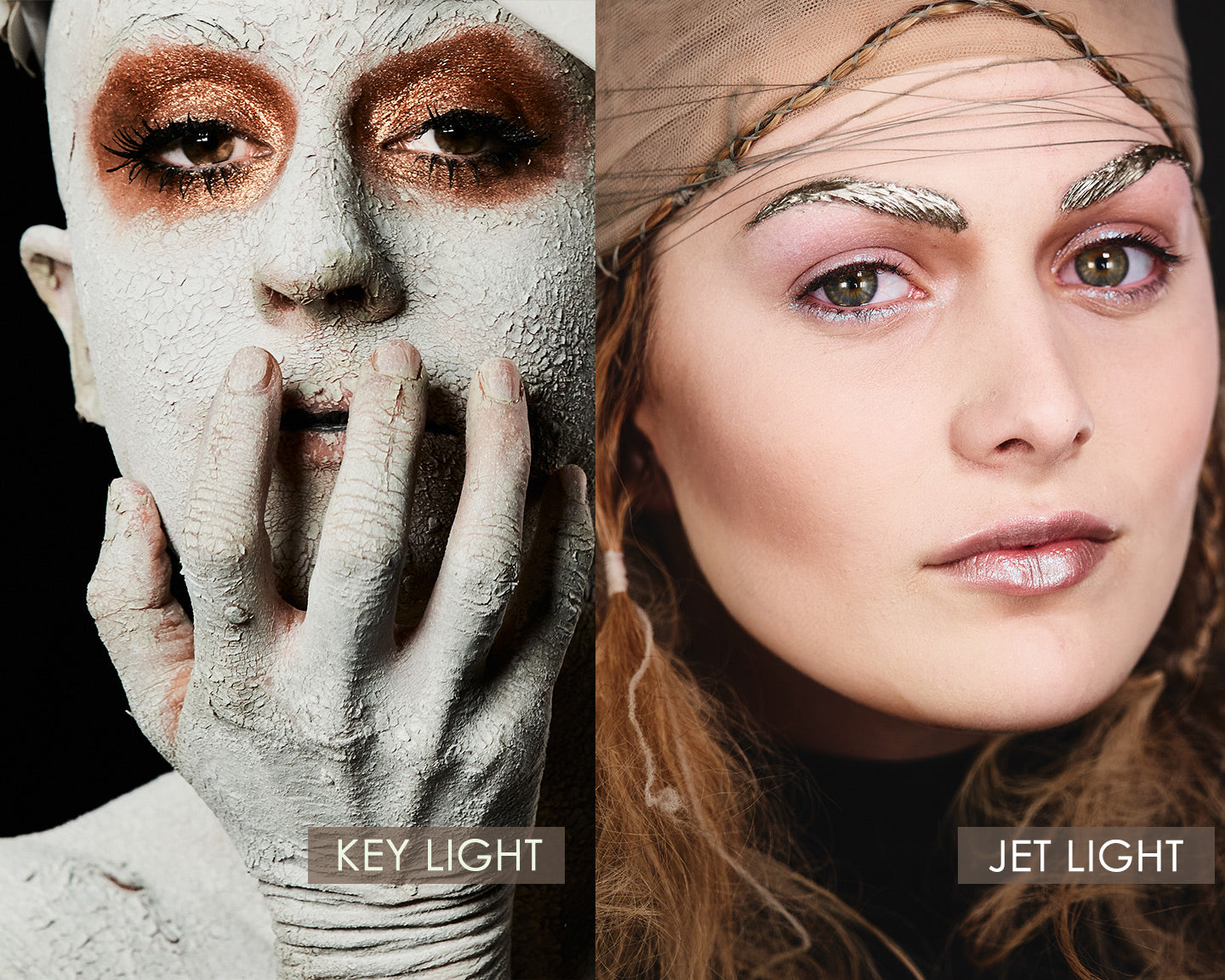
Les lumières TML, comme la Key Light, sont conçues pour être petites afin de voyager facilement et de donner juste assez de contraste pour montrer la texture sans aplatir l'apparence.
Si vous souhaitez un effet plus doux :
● Faites rebondir la lumière sur un mur ou un plafond blanc neutre .
● Ajoutez une autre lumière TML à proximité pour créer une lueur plus grande et plus uniforme.
2 Équilibre de la lumière : ne laissez pas la pièce jouer contre vous
Les lumières TML sont lumineuses et les couleurs sont précises, mais cela ne signifie pas que vous devez photographier dans l'obscurité totale.
● Si votre lumière TML semble trop forte, tamisez-la, faites-la rebondir ou adoucissez-la avec un tissu neutre, mais ne l'éteignez jamais complètement.
● TML est votre lumière principale, la source principale qui met clairement en valeur votre travail. Elle doit s'équilibrer avec la lumière ambiante .
● Les lumières de la pièce (lampes, plafonniers, fenêtres) doivent être contrôlées, mais pas supprimées, sinon elles peuvent perturber la précision des couleurs.
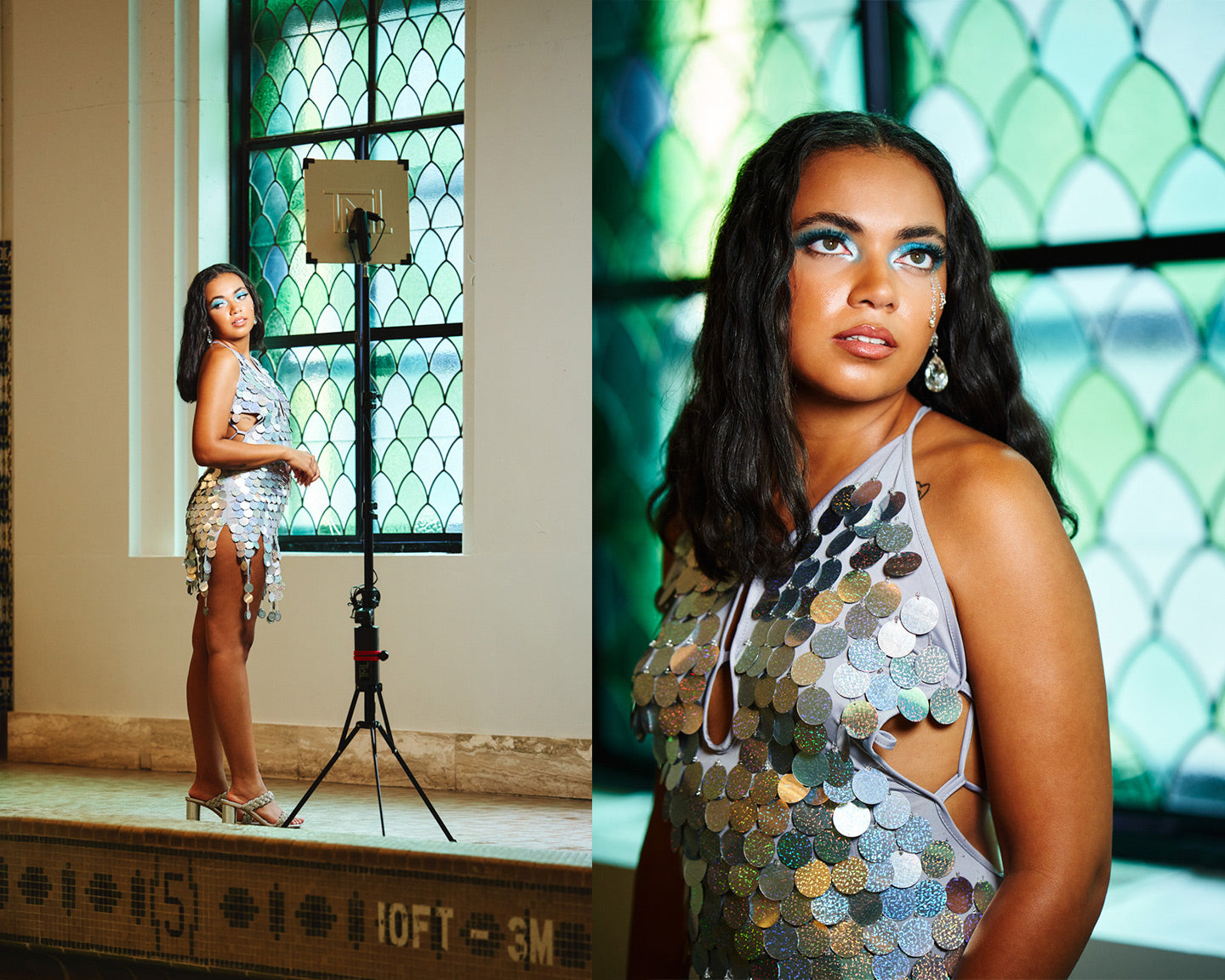
L'objectif ? Laisser TML effectuer le travail de précision pendant que le reste de la pièce ajoute un remplissage naturel.
3 Position de la lumière : où placer votre/vos panneau(x) lumineux pour la meilleure prise de vue
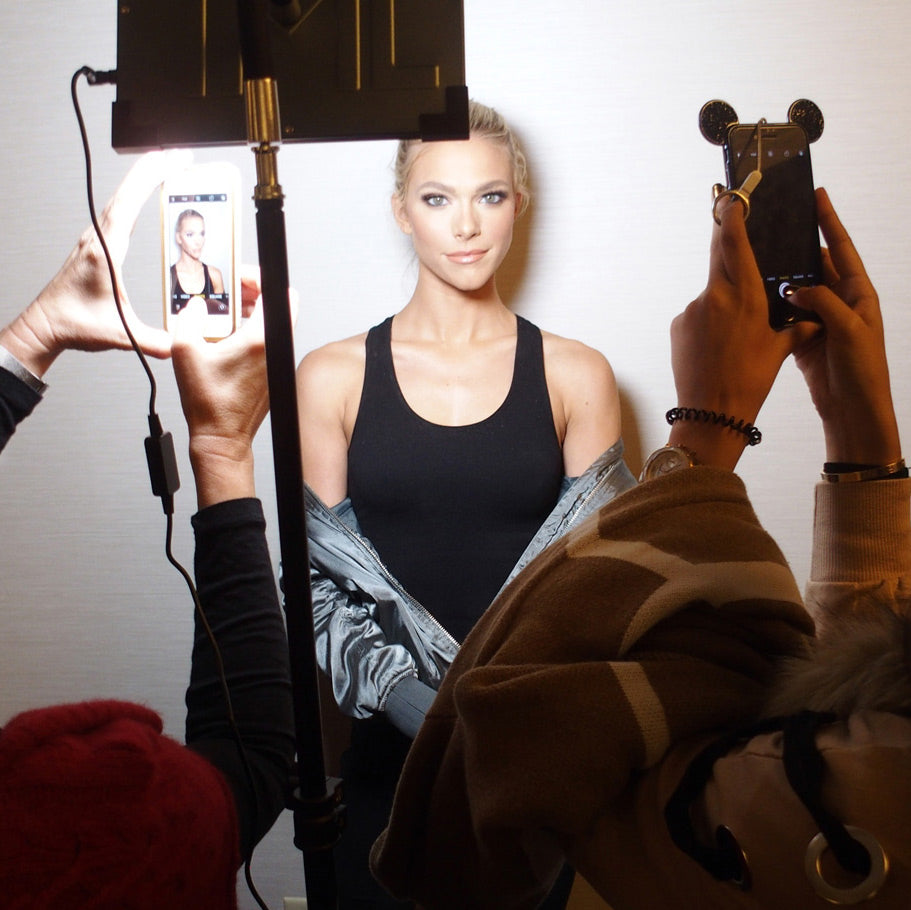
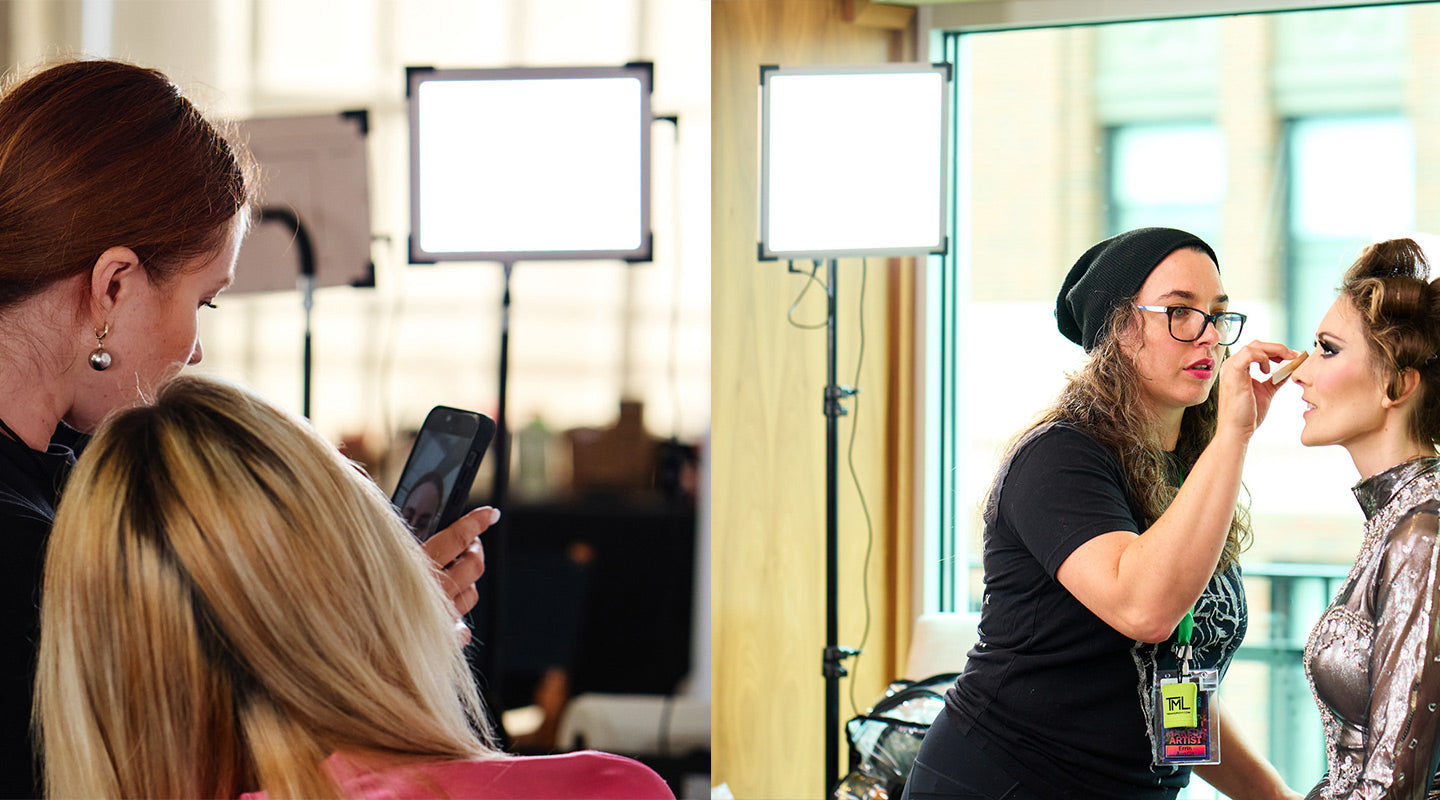
Le placement de l’éclairage peut faire ou défaire une photo.
Voici où placer votre lumière TML :
● Pensez haut et incliné (comme le soleil dans le ciel du soir) Commencez par un angle de 45 degrés par rapport au centre de votre sujet, juste au-dessus de la hauteur de la tête et pointant vers le bas. Cela permet de garder des ombres naturelles et flatteuses.
● Vous utilisez deux lumières ? Placez-les juste au-dessus de la tête et de chaque côté (à 45 degrés pour commencer) pour un rendu uniforme et professionnel. Conseil : une lumière peut être tamisée plus bas que l'autre pour une ombre plus intéressante.
● Pour un éclairage plat, essayez de positionner le panneau lumineux juste devant votre sujet, un peu au-dessus du niveau des yeux.
● Expérimentez une fois que vous maîtrisez ces bases ! Brisez les règles.
Ce qu'il faut éviter :
● Une seule lumière TML dans une pièce noire : elle n’est pas conçue pour éclairer des environnements très sombres.
● Lumière venant directement du bas, à moins que vous ne souhaitiez un effet de film d’horreur !
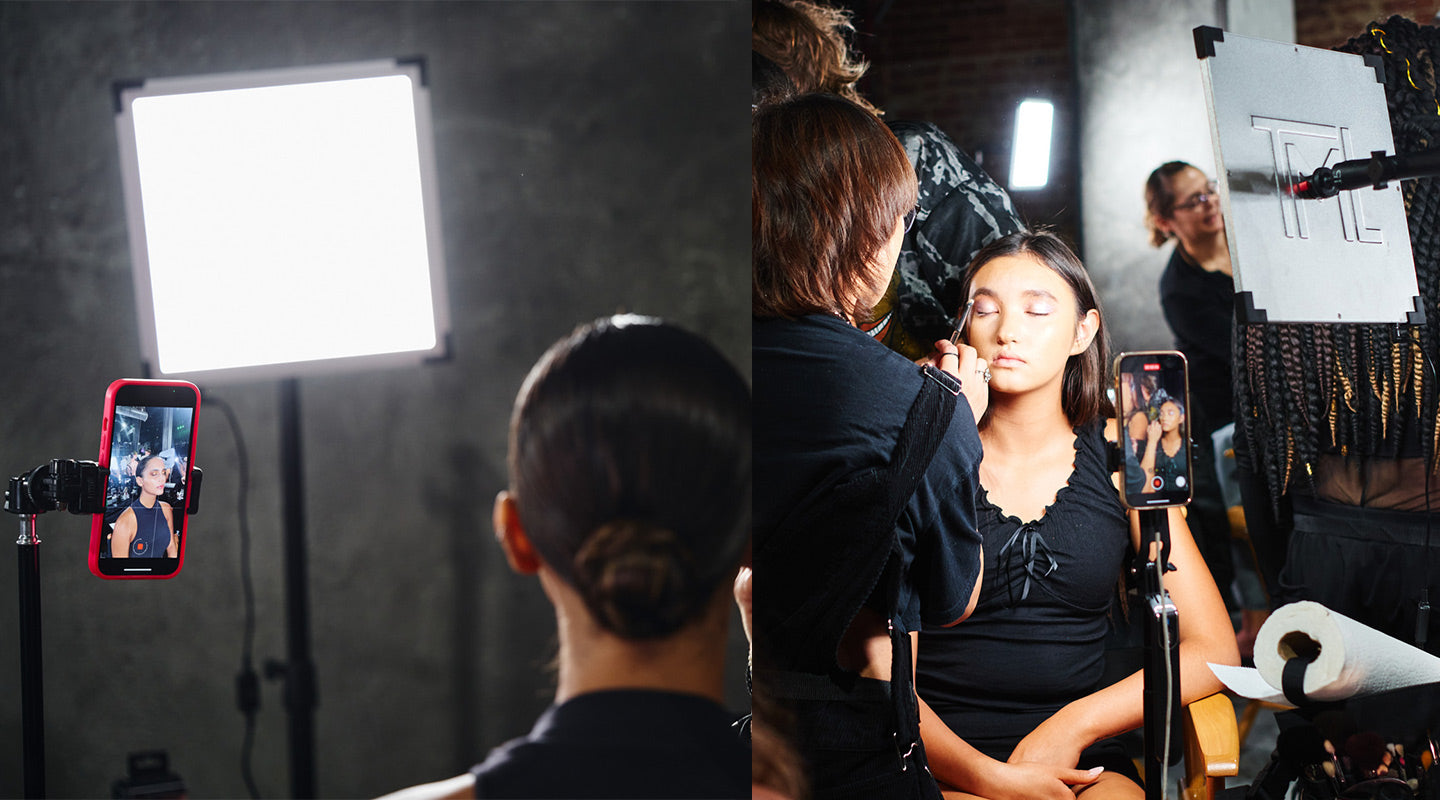
Pourquoi c'est important
Vous avez travaillé dur pour un maquillage impeccable ; votre éclairage doit le mettre en valeur tel qu'il est. En utilisant TML, vous bénéficiez du même niveau d'éclairage que celui des photographes professionnels.
Suivez ces étapes simples et vos photos pourront capturer votre talent artistique comme vous le souhaitez.


